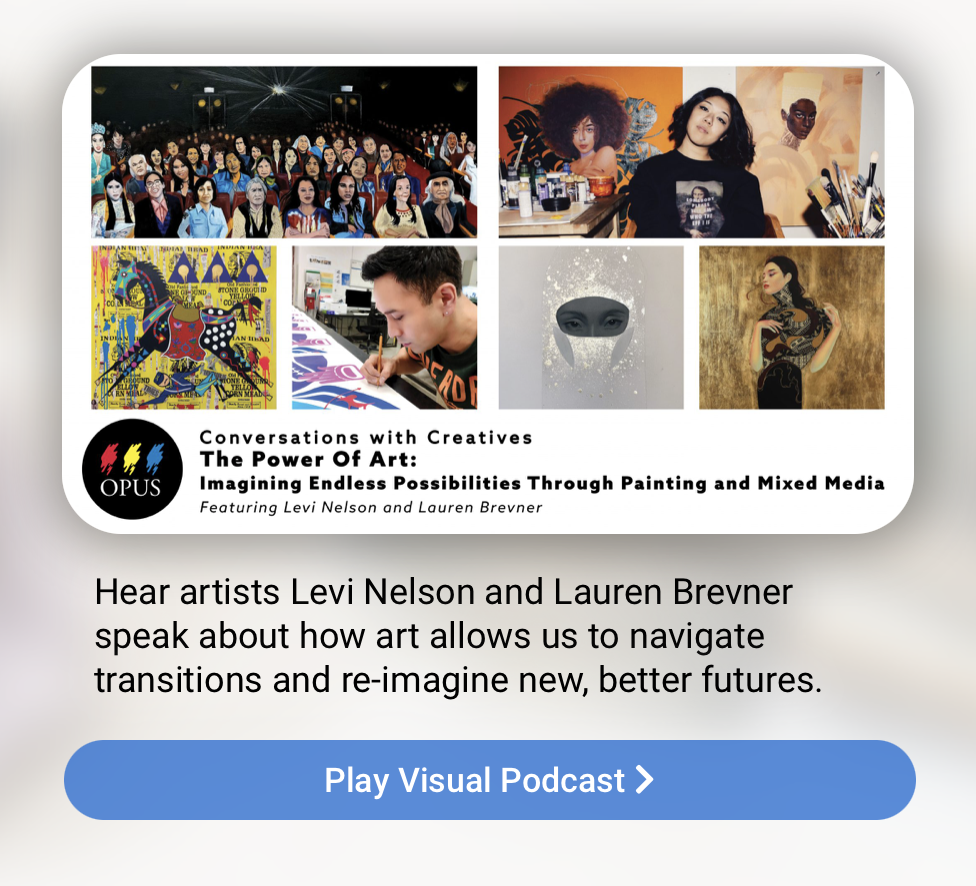The Power Of Art : Printers and Painters – Imagining Endless Possibilities
January 27, 2022These days we hear a lot about ‘the new normal’, but in fact, things are changing so quickly it’s hard to pinpoint what this reality looks like. Within all the challenges and urgency of change, there’s also excitement and vibrancy – a pressing quest to reimagine new futures and an opportunity to make our world a better place.
George Bernard Shaw said, ‘Imagination is the beginning of creation. You imagine what you desire, you will what you imagine, and at last, you create what you will.’
Over the next few months we’re delving deeper into these thoughts and investigating ‘The Power of Art’. What does this mean, especially as we ride such rapid, constantly evolving waves of change?
To begin, with the help of four artists (two of whom are full time printmakers!), we’re exploring how we can harness our imagination, get ourselves into the right headspace to create, and what we can draw from the deeper, more parallel realms of our psyche.
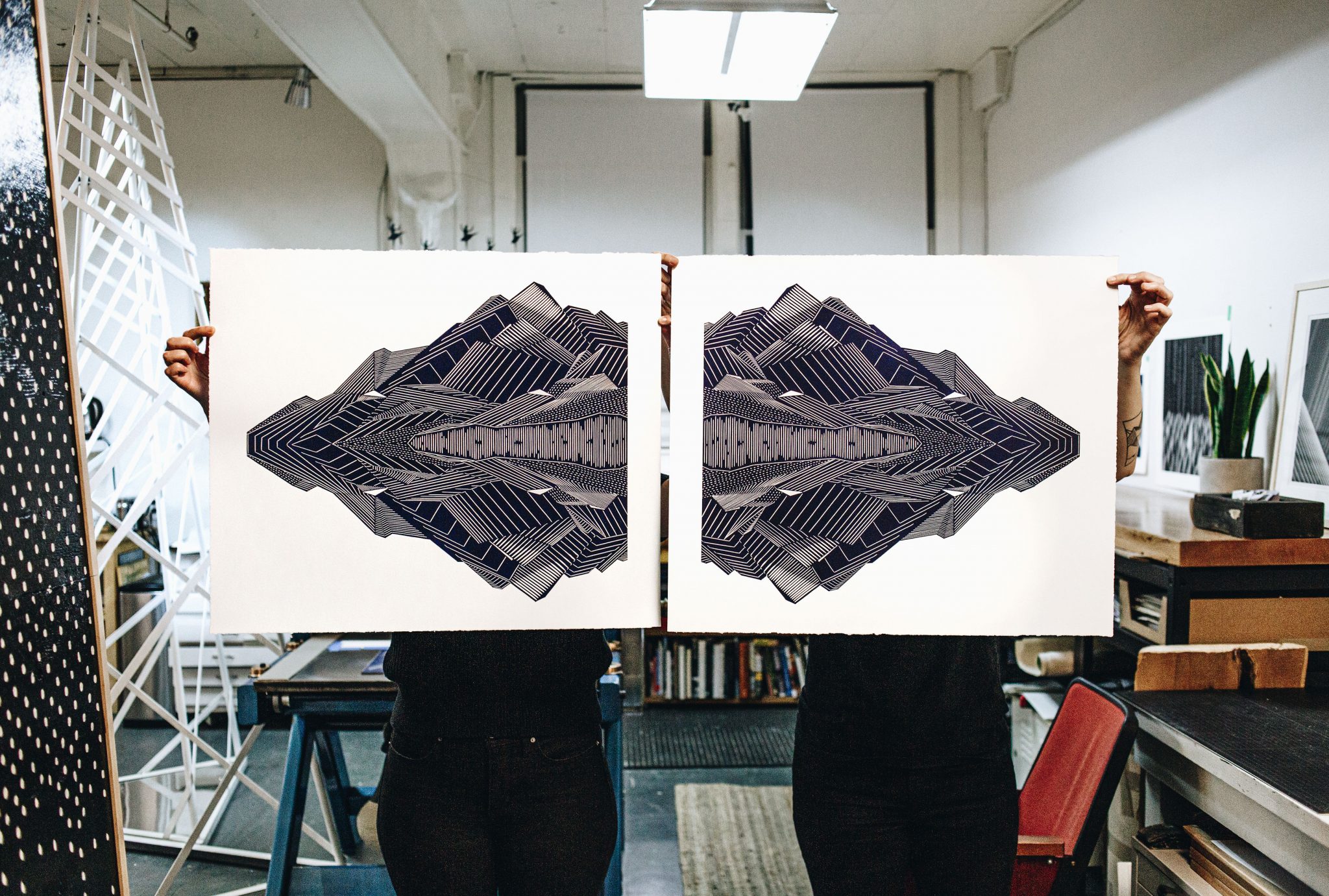
Kari Kristensen
Harnessing lino printing’s even ink application, Kari Kristensen’s work embraces disparate lines of Canadian and international art history. Having forfeited all other devices from hue and texture to brushstroke and blending, Kristensen must coax the eye into seeing shadow, depth, perspective (linear and atmospheric) and reflection she has already declared is not there. The viewer is literally imagining these familiar landscapes, though they are as plain to see as the ink and paper.
When I first started, I waited a bit more for inspiration to hit me, but the more I started doing work, the more I realised that ideas come out of work. While I’m carving I think of other ways the knife could be going into the lino and about other ways I could try to say what I’m saying.
As a printmaker, what I speak with is line work. For me it has emotions attached to it. Whatever that feeling is, whether it’s resonance, awe or austerity, I’m trying to convey it through the printmaking, which I think makes it different and more unique than if I’d painted it. I can try to show how I feel about a landscape, but it’s the landscape that’s echoing to me, not me echoing the landscape – so I’m trying to say a bit more about universal feelings, because that’s what unites us.
Printmaking is a way of manipulating what you see. When I leave spaces that are uncarved or some spaces that are white (the negative space), it’s manipulating the eye – it gives it a place to land and draws your gaze in the direction I want it to be drawn.
Looking at people’s artwork, you can see whether they’re present or if just showing up. If you connect to a piece, the artist most likely was connected while they were doing it.
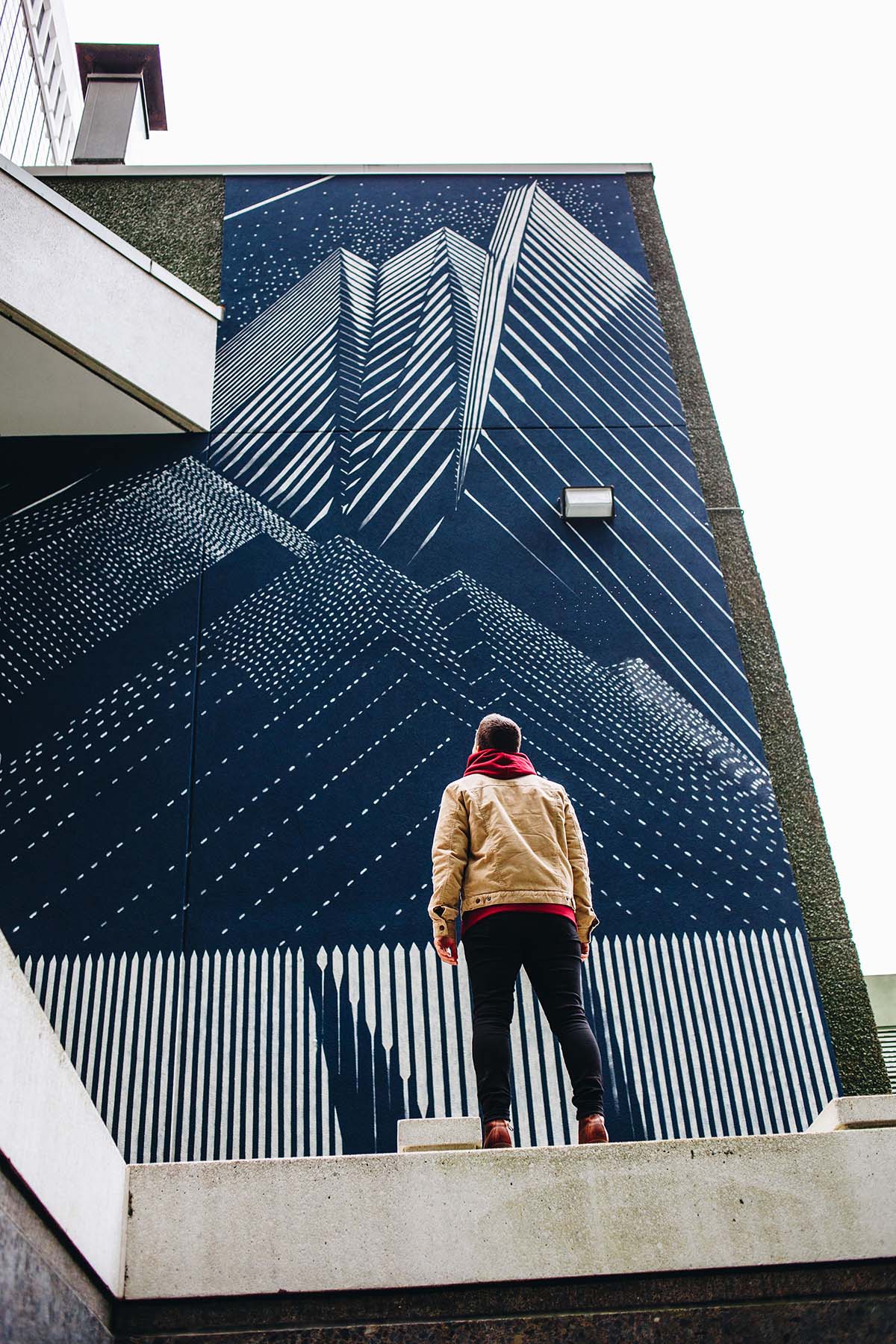
Every artist is saying something about the time they are in and that’s our ultimate responsibility. I think there’s something I have to say that someone else should listen to, which I’m not doing through words or music – I’m saying through my hands, through carving, through printing and in putting it out there visually. So I do have a responsibility to make sure I’m not saying garbage. I want to send something beautiful out into the world, because that’s what I see reflected back at me.

Lee James Abbott
Originally from Britain, multidisciplinary artist and designer Lee James Abbott now resides in Vancouver and is best known for his abstract graphic art and work within the film industry. After a youth spent creating gig posters, Lee was introduced to the medium of screen printing, a technique he went on to study in London. He has been experimenting ever since.
A major inspiration for me were [screen printed] gig posters. I used to love that memorabilia, that idea that there was this one piece of art you could take home which would always remind you of that show. It’s almost like teleportation – you can look at this art piece and get transported back to an experience.
It’s easy to get carried away with the run of normality. Psychedelic art offers a different way of looking at things that I think is important in life.
A lot of the work I’ve been doing hopes to raise more awareness about the human condition, not just with each other but also ourselves. I do believe that happiness is controlled by yourself.
My solo show last summer explored the theme of loneliness, looking at how people are experiencing isolation. Especially right now with the pandemic, but even before, I felt there was a problem with people living quite solitary lives, particularly in cities. I don’t want anyone to feel lonely when they view the pieces, it’s more just acknowledging a shared emotion and bringing it to the forefront rather than tucking it away and not dealing with it, which I think is a big problem we have as individuals.
Art has the power to transport and heal you. As an artist, you just have to try and get on with it in your own way and do things to help you focus on your craft. For me, yoga and meditation really help.
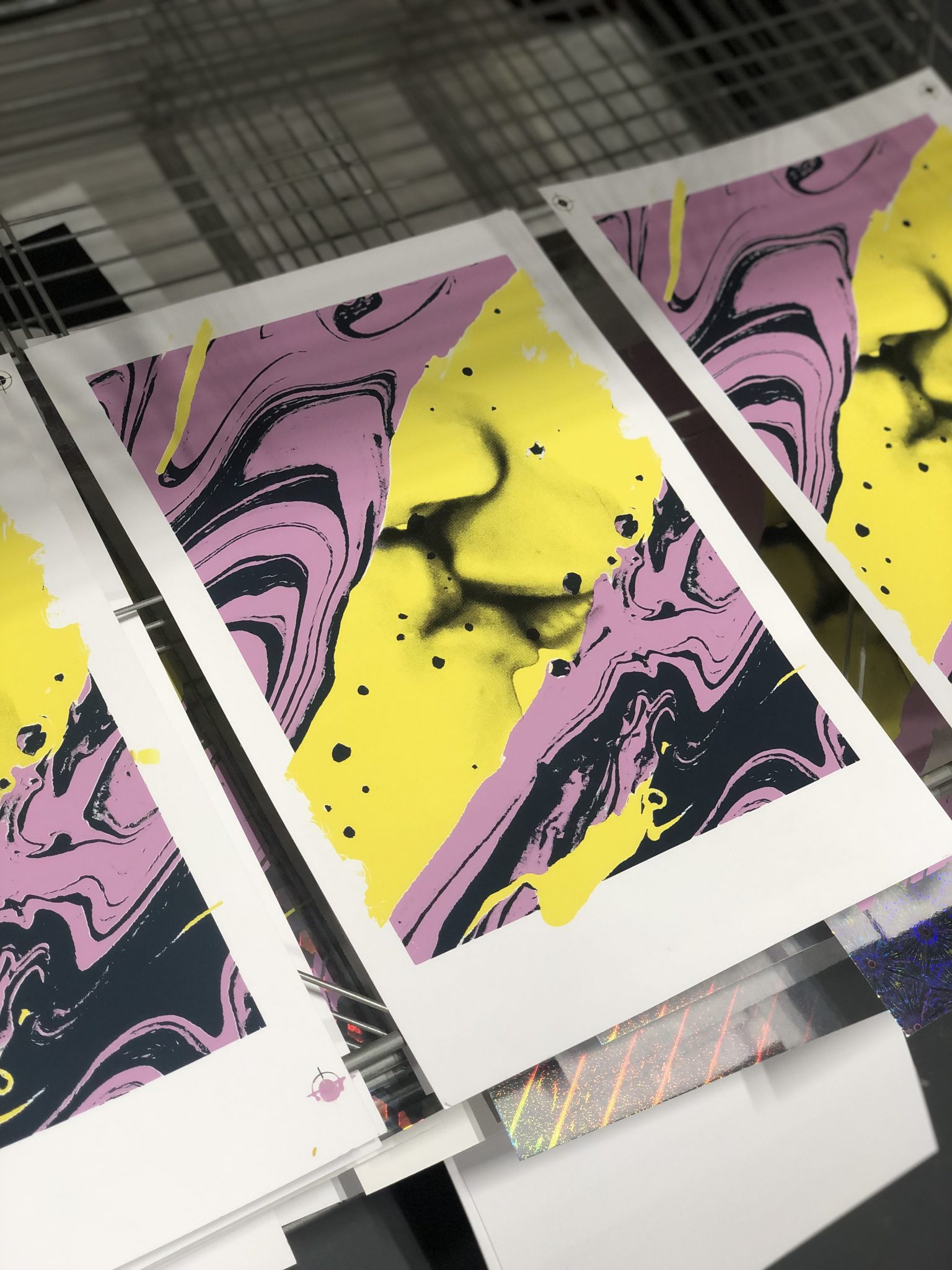
As I was inspired by the gig posters of the ‘60s and more recently of the ‘90s resurgence, I’ve been looking at the history of printmaking in Vancouver and seeing how important it was in that scene – there is a huge heritage! This year I want to create a community of printmakers and reestablish printmaking in general and specifically screen printing as an artform that’s synonymous with the city. We’ve already got some plans in place for group shows, so if anyone’s interested, I’d love for them to get in touch.
![20211127_094048[7721]](https://community.opusartsupplies.com/wp-content/uploads/2022/01/20211127_0940487721-scaled.jpg)
Levi Nelson
Currently completing his graduate degree at Columbia University School of the Arts, Levi Nelson is already one of the most celebrated Indiginous artists in the country and the recipient of numerous awards. Employing oil painting, mixed media and more recently printmaking, his work is a part of the Permanent Collections of the Audain Art Museum Whistler and The VGH & UBC Hospital Foundation Art Collection, plus scores of important private collections in the Lower Mainland and across Canada.
Indigenous Futurisms encourages Indigenous people to think about our place far into the future as a way to escape the harsh realities of our past or even current state of affairs as we are still colonised. I’ve used it as a way to open up my art, to push it forward, use unconventional colour, place Sitting Bull on the same surface as Snow White, or mix Northwest Coast shapes with techno colours. If you think about Indigenous art a lot of it can be pigeonholed or pushed into the Native art gallery or gift shops. Indigenous Futurisms opens up this whole new world for Indigenous artists and our art to exist on the same walls and in the same rooms as contemporary artists, not just in specific shows.

Artists help shape the world as we see it today. The buildings and rooms that we live in, the cars that we drive and the apps that we use are all designed by creatives, so art has an impact on our everyday lives to a degree we don’t necessarily notice all the time. Artists quite literally design culture – they present ideas and images and their creations have an impact on people.
Art has to look good on a wall, not just in a decorative sense but it should have a message and a meaning behind it. One of the motivations to be an artist is that we want to create a world the way we see it – not only in beauty but in the idea of how a just society might be. Our imaginations, the work we make and the way we think about life definitely have an influence on the way our futures unfold.

Lauren Brevner
Lauren Brevner is a multidisciplinary artist whose work, deeply inspired by her Japanese-Trinidadian heritage, combines traditional approaches to portrait painting with themes of cultural identity and female representation. It has been featured across multiple platforms, including exhibitions, civic projects, print publications, and most recently the Vancouver Art Gallery.
From scents to music, anything I can do to activate the senses helps put me in a space to create. I like to be in a joyful space entering the studio. I can’t work if I’m really depressed. Having that joy allows me to access those different emotions I play with.
But you need to step away from the studio and just like anyone else, you can’t be working a hundred hours a week. Making sure my partner James Harry and I are taking time off is a big thing – making sure we’re going for walks and leaving the house and having some semblance of a schedule as well. We are our own bosses so it can’t be super loose. When you’re doing this full-time as a career you have to set boundaries.
Myself being mixed leaked into my work. I like to blend and take things that maybe don’t fit together, even pattern clashing, and try to make it work. I guess that’s representative of how I feel being Japanese, Black and German. I always felt I didn’t belong in any one place and so my work could be called emotional self-portraits. I’m trying to represent the mixed female and convey how I feel as a mixed female.
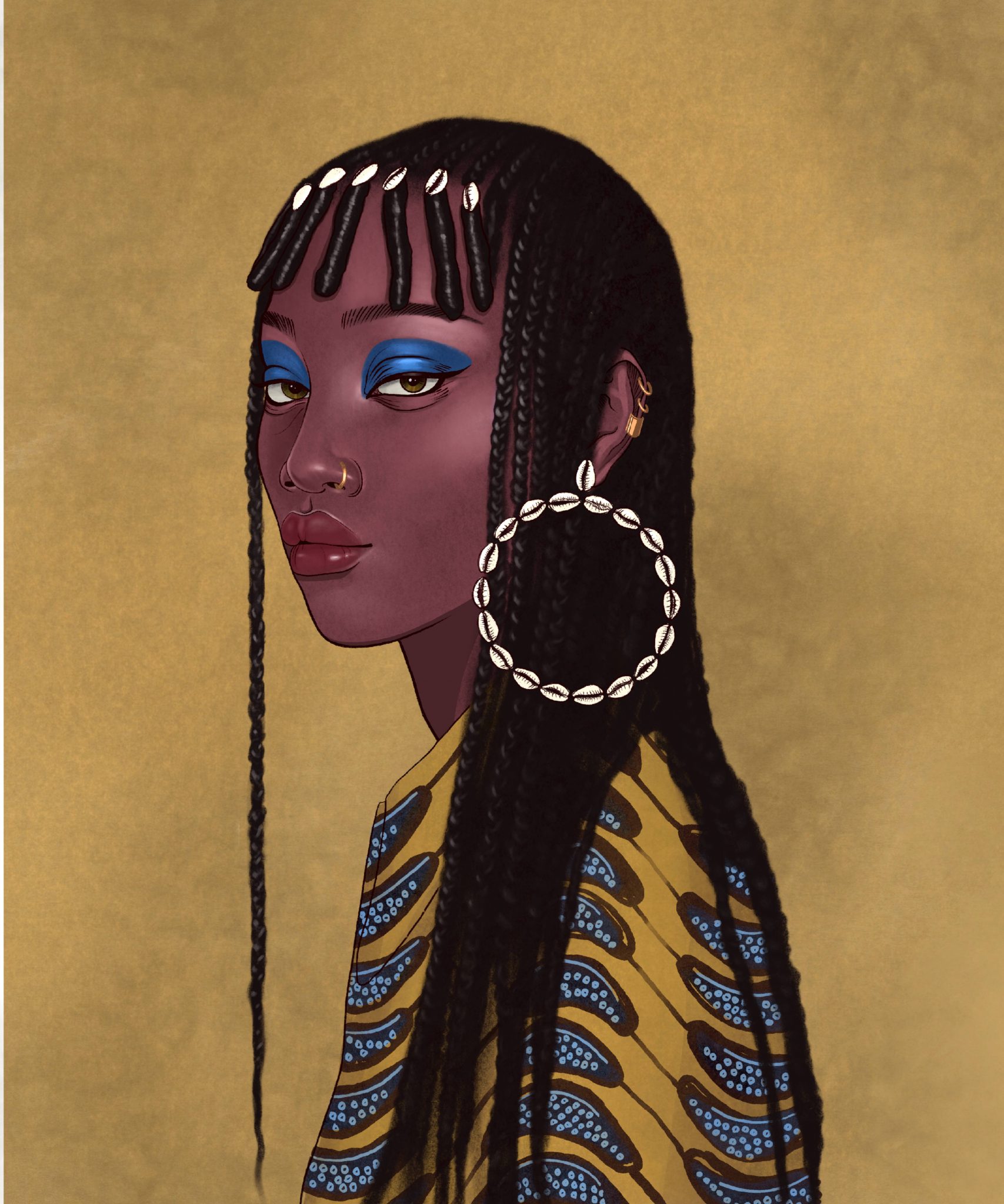
When I look at art, I want to be transported into some other space. I’m not trying to portray a woman sitting in a room, I’m trying to portray a more surreal, escapist portrait – my dream version of female beauty.
‘A picture can paint a thousand words’: that’s the power of art – it’s a different way to convey what you’re feeling, connect with different people and it provides an emotional escape.


